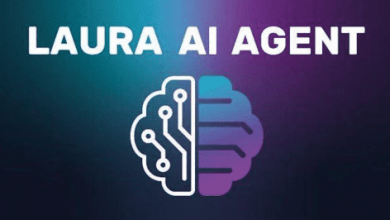Understanding the Journey Toward Behavioral Change

In today’s digital era, the accessibility of online content has reached unprecedented levels. What used to require effort and intent now only takes a few taps on a smartphone. Among the most widely consumed categories of content is explicit material. For some, what begins as casual engagement gradually evolves into compulsive behavior that begins to affect mental health, relationships, productivity, and self-esteem.
The road toward behavioral change is not about demonizing technology or shaming individuals, but about recognizing when a pattern has become disruptive and understanding how to move toward a more empowered, self-directed life. One such challenge faced by many, though often silently, is dependency on adult content. Acknowledging this struggle is the first step, and it is often the most powerful.
This article provides insight into the psychological, emotional, and neurological underpinnings of this type of compulsion and explores a structured pathway to healing and self-regulation.
The Psychology Behind Compulsive Consumption
Behavioral patterns are often rooted in emotional regulation mechanisms. Many people turn to instant gratification when they experience stress, anxiety, boredom, or emotional discomfort. The human brain is naturally wired to seek pleasure and avoid pain. In the case of digital adult content, the stimulus offers a quick hit of dopamine—a feel-good chemical associated with reward and pleasure.
When this stimulus is repeatedly accessed, the brain begins to expect it during times of discomfort, creating a neurological feedback loop. Over time, tolerance builds. What once seemed stimulating may no longer satisfy, leading to more frequent or extreme consumption. This is how compulsive cycles form—not because someone is weak or immoral, but because the brain has been conditioned to associate certain behaviors with relief and reward.
Breaking this cycle requires more than just willpower. It requires a thorough understanding of triggers, underlying emotional drivers, and effective coping mechanisms.
Recognizing the Signs of Dependency
While everyone is different, several key signs may indicate that a behavior has shifted from casual to compulsive:
- Loss of control: Repeated attempts to cut down or stop are unsuccessful.
- Preoccupation: A significant amount of time is spent thinking about, seeking out, or engaging with adult content.
- Neglected responsibilities: Work, school, or relationships are affected.
- Emotional impact: Feelings of guilt, shame, anxiety, or depression follow the behavior.
- Escalation: The need for more content or more extreme material to achieve the same effect.
Awareness of these signs is not meant to instill fear or judgment but to encourage reflection and support informed decision-making.
Building Awareness and Motivation
Awareness is the foundation of meaningful change. It begins with asking honest questions:
- What role is this behavior playing in my life?
- What feelings typically lead me to engage in it?
- What do I want more of in my life that this behavior is replacing?
This type of reflective questioning invites curiosity instead of judgment. It creates a space where the individual can step back and observe patterns without shame. Motivation to change often emerges when people can clearly connect their current habits to the pain or dissatisfaction they’re experiencing—and when they can envision a more fulfilling alternative.
Writing down reasons for wanting to change and revisiting them regularly can strengthen this motivation. Some people keep journals or visual reminders of their goals and progress, which helps solidify their intent.
Identifying Triggers and Creating Interruption Strategies
Understanding personal triggers is essential. Triggers can be internal (emotions like loneliness, stress, or boredom) or external (certain websites, images, or routines). Once identified, the goal is to create space between the trigger and the response. This is where practical strategies come into play.
Common Interruption Strategies:
- Delay: Commit to waiting 10 minutes before acting on an urge.
- Distraction: Engage in another activity like going for a walk, calling a friend, or practicing a hobby.
- Physical movement: Exercise releases endorphins and can shift mental focus.
- Environment changes: Alter your routine to avoid predictable trigger situations (e.g., keeping your phone out of the bedroom).
Small interruptions can break the automatic nature of the habit, allowing time for more conscious decisions to be made.
Developing Emotional Resilience
Behavioral change isn’t just about removing a habit—it’s about filling the gap it leaves behind. Emotional resilience is the ability to sit with discomfort without resorting to avoidance or harmful patterns. Building this capacity involves:
- Mindfulness: Practices like meditation or deep breathing help increase awareness and reduce impulsivity.
- Self-compassion: Treating yourself with kindness during setbacks makes recovery more sustainable.
- Journaling: Writing down thoughts and emotions can provide clarity and reduce the urge to act out.
- Therapy or counseling: Talking to a trained professional can help address underlying issues and offer personalized tools.
Developing these skills takes time, but they form the emotional backbone of lasting change.
Strengthening Identity and Purpose
A key part of long-term behavioral transformation is shifting from “avoiding bad habits” to “building a meaningful life.” People who feel connected to a sense of purpose—whether through relationships, creativity, career, or spirituality—are less likely to seek out artificial forms of satisfaction.
Ask yourself:
- What kind of person do I want to be?
- What brings me genuine joy and fulfillment?
- What values matter most to me?
As you align your daily actions with these values, your sense of identity strengthens. You begin to see yourself as someone who is resilient, focused, and in control. This internal shift is more powerful than any external accountability system.
For anyone seeking to Overcome Porn Addiction, it’s critical to reimagine life not as a battle against urges but as a movement toward clarity, freedom, and purpose.
Utilizing Tools and Support Systems
Technology, ironically, can be part of the solution. A range of tools are available to support behavioral change, including:
- Website blockers: These help limit access to triggering content.
- Accountability software: Programs like Covenant Eyes or Accountable2You provide real-time alerts and reports to trusted partners.
- Daily trackers: Keeping count of streaks can provide motivation and a visual reminder of progress.
- Online forums or support groups: Sharing your journey with others reduces shame and increases resilience.
Additionally, many people benefit from speaking with a therapist, coach, or trusted mentor. Having a support system makes a significant difference, especially during setbacks.
Managing Relapses and Staying on Track
Relapse does not mean failure. It’s part of the learning process. The most important thing after a slip is how you respond.
Instead of falling into a cycle of guilt and avoidance, ask:
- What triggered the relapse?
- What can I do differently next time?
- What support do I need to implement now?
Each relapse can provide data that strengthens your strategy. With this mindset, setbacks become stepping stones rather than stumbling blocks. The goal is progress, not perfection.
Those who successfully Overcome Porn Addiction often report that their journey taught them much more than how to manage a behavior—it taught them how to manage emotions, how to live with integrity, and how to connect more deeply with themselves and others.
Reclaiming Control and Moving Forward
Change is not just about stopping something destructive. It’s about starting something better. It’s about moving toward a life where you feel confident in your choices, where your energy is directed toward building, not avoiding. When people start to see progress, no matter how small, they often notice improvements in self-esteem, mental clarity, and relationship quality.
Every moment spent choosing growth over habit reinforces the belief that change is possible. There will be challenges, but each challenge is an opportunity to build strength. The journey of transformation is one of courage, persistence, and self-respect.
To Overcome Porn Addiction , it’s essential to be patient with yourself, to focus on building rather than only breaking, and to remember that your worth is not defined by your struggles—but by your willingness to rise.





